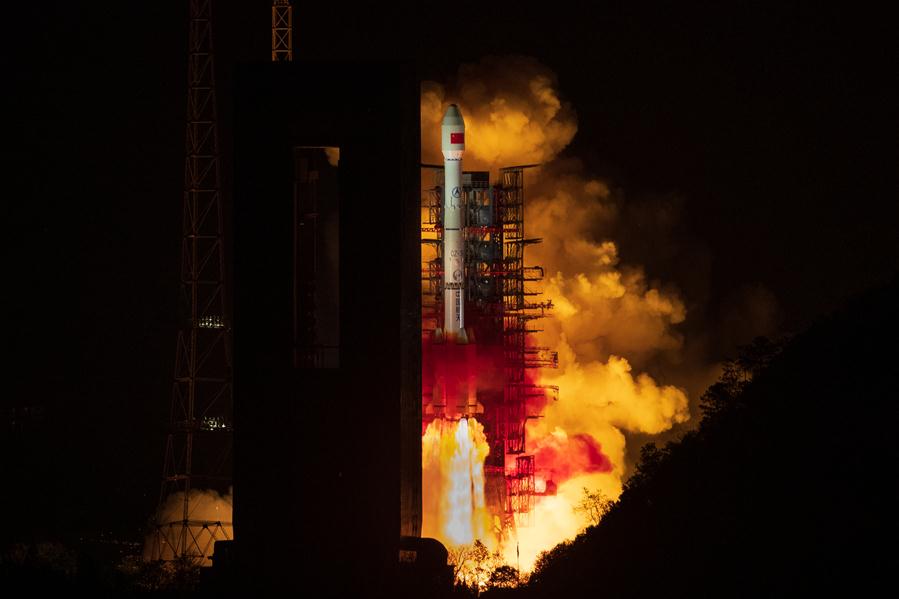China launches new data relay satellite


China launched the first of its new-generation data relay satellites on Sunday night as part of the preparatory work for the nation's next manned space missions.
The Tianlian II-01 was lifted off at 11:51 pm atop a Long March 3B carrier rocket at the Xichang Satellite Launch Center in Sichuan province and later was placed on a geostationary transfer orbit, according to a statement from the China Academy of Space Technology that developed and built the satellite.
The spacecraft is the first in China's second generation of data relay satellite, the academy said, adding its entry into service will substantially improve the country's space-based data relay capability.
Next, researchers will start designing the Tianlian II-02 and Tianlian II-03 that will join the Tianlian II-01 to form a network, according to the statement.
With a DFH-4 framework, Tianlian II-01 is mainly tasked with relaying data for the country's piloted spaceships, space labs, low- and mid-orbiting satellites as well as its future space station. It will also be used to track and monitor these spacecraft.
China's first-generation data relay satellite network, the Tianlian I system, now has four satellites. The first of them was launched at the Xichang center in April 2008. They have serviced several important space activities such as the rendezvous and dockings between the Tiangong I space lab and Shenzhou spaceships.
- Mainland scholar discloses fallacies in Lai's separatist narrative on 'unity'
- University's expulsion of female student ignites online debate
- 4,000 hiking enthusiasts hit rugged trails in Chongqing
- Creative fireworks show held in China's 'fireworks capital'
- Chinese scientists achieve net-negative greenhouse gas emissions via electrified catalysis
- At the gateway to China's resistance, memories of war echo 88 years on





































